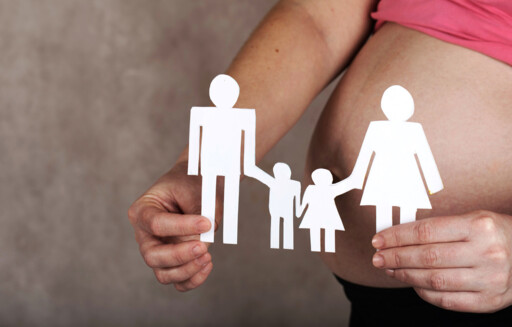


China unveils new measures to encourage childbearing

New policies are expected to facilitate the building of a childbirth-friendly society. Photo: TUCHONG
On Oct. 28, the State Council of China unveiled an array of stimulus policies with a view to building a childbirth-friendly society. The multipronged measures encompass enhancing childbirth support services, expanding childcare systems, strengthening education, housing and employment support, and cultivating a childbirth-friendly social atmosphere.
Demographic shifts
The introduction of these policies comes as China grapples with a rapidly aging population alongside declining birth and fertility rates. Data shows that individuals aged 65 and above now comprise over 14% of the total population, signaling China’s transition to a moderately aging society.
Moreover, China’s population has been in decline since 2022. According to the National Bureau of Statistics, the population had decreased to 1.40967 billion by the end of 2023, a year-on-year drop of 2.08 million. Births in 2023 totaled 9.02 million, a decrease of 0.54 million from the previous year, with a crude birth rate of 6.39‰ and a natural population growth rate of negative 1.48‰. This marks the second consecutive year of population decline, with births falling annually for seven straight years since 2017, hitting a record low. Furthermore, the total fertility rate slipped to approximately 1.02, below the warning threshold of 1.5.
Based on his survey, Han Minchun, a member of the National Committee of the Chinese People’s Political Consultative Conference and professor at Huazhong University of Science and Technology, attributes declining birth rates primarily to a societal decrease in motivation to have children. Two major factors behind this trend are the rising costs of childrearing and mounting anxiety over children’s development, as well as the challenges women face in balancing family responsibilities with career demands.
Han further noted that fertility is declining across structural, societal, and physiological dimensions. Structurally, the number of women of reproductive age is dwindling, driven by widespread delays in marriage and childbearing. In terms of societal fertility, the familialist culture of traditional Chinese society, which advocates for “the more, the happier” as regards children, is increasingly at odds with younger generations’ individualistic pursuits. Physiologically, factors such as environmental conditions, mental health, and reproductive health issues are also contributing to lower fertility.
Tailoring policies to realities
In response to these demographic shifts, China has progressively relaxed family planning policies over the past decade, from phasing out the decades-long one-child policy to announcing support for couples who wish to have a third in 2021.
The Report to the 20th CPC National Congress, released in October 2022, stressed the importance of improving population development strategy, establishing a policy system to boost the birth rate, and bringing down the costs of pregnancy, childbirth, childrearing, and schooling. Adopted in July 2024, the Resolution of the CPC Central Committee on Further Deepening Reform Comprehensively to Advance Chinese Modernization called for efforts to refine the policy systems and incentive mechanisms for boosting the birth rate and strive to build a childbirth-friendly society.
The recent introduction of stimulus policies represents a concrete response to these calls for action. Shi Yi, an associate research fellow from China Population and Development Research Center, explained that childbirth extends beyond individual choices, involving families, the broader social environment, and employers. From this perspective, individual fertility intentions are influenced less by personal preferences and more by the surrounding social and family atmosphere.
In this sense, the term “childbirth-friendly” not only encompasses childbirth and childrearing, but also marriage and parenting, as well as employers and related environments, Shi said. Therefore, building a childbirth-friendly society requires coordinated efforts from governments, individuals, families, society, and employers to build a supportive cultural atmosphere and institutional environment. This collaboration will also help ease parenting-related anxieties, making childbearing and childrearing a more joyful and fulfilling experience.
Facilities in place
In fact, local governments across China have already begun implementing the stimulus measures to encourage childbirth, including subsidies, expanded insurance coverage, extended maternity leave, and the creation of more public childcare facilities.
Data shows that by the end of 2023, China had established facilities offering care services for 4.77 million children under 3 years of age, which translates to approximately 3.38 such offerings for every 1,000 people. Meanwhile, there were 236,000 non-profit kindergartens, accounting for 86.2% of all kindergartens in the country.
Under the guidance of new policies, it is expected that obstacles hindering fertility rate recovery will gradually be removed, and the immediate costs and concerns associated with childbirth, childrearing, and education will be effectively alleviated, leading to a refinement of the policy systems and incentive mechanisms aimed at building a childbirth-friendly society.
Editor:Yu Hui
Copyright©2023 CSSN All Rights Reserved